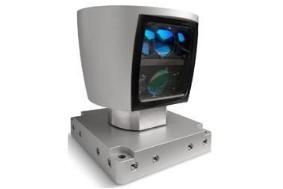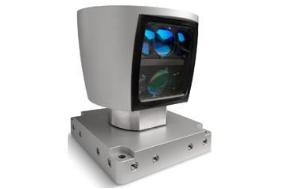
Developed as a way to guide autonomous vehicles, originally in a race across the Mojave desert back in 2005, LIDAR works by visualizing the environment around the device. Originally this was done using video cameras but now LIDAR uses a laser-based system.
The HDL-64E rotates an array of of multiple fixed lasers to deliver a 3-D terrain image of the surrounding area. By pulsing each laser for a short duration (typically 4 nanoseconds) and measuring the time it takes for the pulse to reach an object and return, the machine can build a picture of the surrounding terrain.
Velodyne's ultimate vision is to see the equipment used to save lives by being fixed to all sorts of vehicles. For the moment, the technology should find a home wherever a 3-D understanding of an environment is required: robotics, map capture, surveying, navigation.
To read more about Velodyne's technology see the website here, and to check out Radiohead's new video and see the HDL-64E in action click here.
